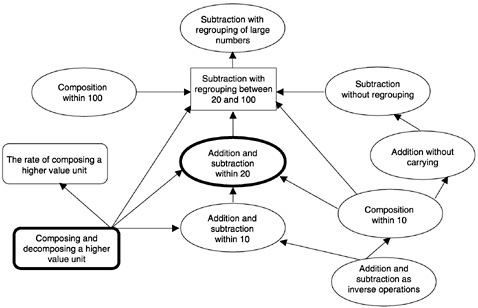Danny Brown asked which theory of learning I subscribe to, and I was a bit stumped. Not because it isn't in there somewhere. It's probably quite a good theory of learning. But I'm not exactly sure what it is. I'm not proud of that (really!); I think it would be a good thing to read up on and then place myself on the map. It's just not something I've done enough to really locate myself very accurately.
I thought I'd blog about our recent fractions work, so why not, in the absence of a theory of learning, throw in a few things I think direct me.
A fraction talk is always a good thing. There should be looking, and thinking and talking. Mistakes should be okay. Learning happens best when we can try things out, where there's not an authority we defer to, but we get stuck in and make of things what we can. So I note down "mistakes" with just my usual interested expression on my face, no eyebrow ironically raised (I can't do that anyway):
I think it's okay for the teacher to chip in too, with as much interaction as possible:
And then we can revisit what we said, and see if we can make more sense of things:
I think there should be lots of hands-on and play, especially for primary children. They are more alert, engaged and comfortable when they're playing, and usually everyone gets on with each other a lot better.
 |
| "Fraction Fortress" - great for getting familiar with the relative size of fractions |
 |
| "Fraction Formula" - I maybe need to make fraction cards that aren't coloured for this. |
Another thing - what Zoltan Dienes called "multiple embodiment". We need to sweep through the territory in more than one direction, make links with more than one other area of learning (Liping Ma calls this breadth of learning). Some of these give depth too, in Liping Ma's terms - they connect to more important ideas on the subject. One of the connections it's useful to make is to the number line, that fractions aren't just parts of something, they are also numbers in their own right:
 |
| We had to say which two other fractions the new one fitted between. |
 |
| Adding the fifths, on green card, to the washing line |
Another idea that's in there is that students don't need to know or remember things all the time, sometimes they can just contemplate, notice, explore, ask questions. These are skills that will always be useful, so the trick is to find environments where there's plenty of real maths to notice and think about. I found one such environment in Ford Circles.
I didn't know about them until I saw this video
I didn't show the video to the class of course, but I wanted them to be in this unfamiliar place, and to feel comfortable, to learn again what it's like for things to come into focus after seeming completely unintelligible. And in terms of fractions, all sorts of things - that they slot between each other, that they continue to do so, that there are hierarchies and patterns in them, that they can be organised as a complete set...
Here's what they thought first of all:
Then after the half was slotted in half way between the 0 and the 1:
Impressive thinking from Kirill. We then saw the next slides step by step, and I showed them the Wolfram Demonstration, which allows you to show different numbers of circles and to zoom in and out. (You need to install the Wolfram CDF player to do this.) Things were really hotting up with the noticing:
Students need to move between whole-class conversations and individual and group work (otherwise how will you and they know what they think?) so we went off to make notes about what we'd noticed, and any questions we had.
A number of students were bothered by the size of the cirlces. This was a productive red herring.
 |
| This representation made links between decimal and fraction notation |
 |
| 1/3 "not goodly slotted" - great thing to notice! |
Another potential brick for the edifice of my theory is that we learn well by having an enviroment where we can assemble our own data and organise it in our own way, that gives feedback itself about how good a systematisation it is. It's often hard to find such environments, but the trusty Cuisenaire rods provide one here:
 |
| I'm thinking to ask students to place these on a number line next! |
 |
| Some students wanted to draw them |
 |
J asked to do a bigger one! |
Some students were puzzled by the fractions that were bigger than one - but puzzlement that comes from something you yourself have produced is no bad thing.
None of this amounts to much of a theory of learning of course, but hopefully the small components might fit in somewhere.
As for that theory can anyone - Danny? - point me in the right direction for some reading to help me?



































